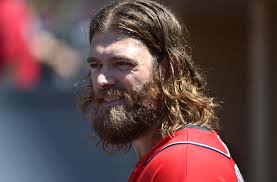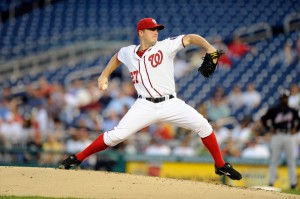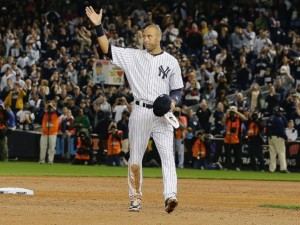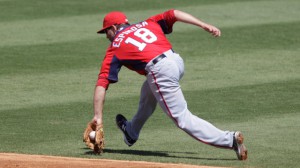As we start to debate what the team may do this coming off-season, it is worth discussing the projected payroll for 2015 and the impact it may have on the moves this team makes.
A couple of salient points to start with:
- The Nats opening day 2014 payroll was somewhere in the $135M range (depending on your source; USA Today had opening day payroll at $133M, Cots had it at $136M).
- Owner Ted Lerner was quoted in April that “payroll was beyond topped out.” Which probably can explain some of the cost-savings moves the team made later in the year (acquiring Asdrubal Cabrera and getting the Indians to kick in his salary).
- The MASN debacle is still not sorted out, meaning the Nats are still operating on a smaller budget than they should be, and the Nats are likely holding down payroll to a certain operating level until they know exactly how much money they can expect out of the deal going forward.
So, based on the above three facts, I’m working under the assumption that the Nats 2015 payroll isn’t going to change much. The Lerners may be the league’s richest owners, but they’re not running the Nats as a money loser.
Which will make the following analysis kind of scary, honestly, because I’ve got the 2015 Nats payroll projecting at close to $150M. I’ve posted my work here (a Google xls, also available as a “link” along the right hand column of the blog), so you can see if I made some egregious errors in calculation. Let’s play along by section to see how I arrived at this number and what I think it means for this off-season. This accounts for all 39 guys currently on the 40-man roster:
| Under Contract for 2015 – 10 |
||
| Werth, Jayson | 7 yr/$126M (11-17) | $21,571,000 |
| Zimmerman, Ryan | 6 yr/$100M (14-19)+20 opt | $14,000,000 |
| Gonzalez, Gio | 5yr/$42M (12-16)+17,18 options | $11,100,000 |
| Zimmermann, Jordan | 2yr/$24M (14-15) 7.5 and 16.5 | $16,500,000 |
| Desmond, Ian | 2yr/$17.5M (14-15), 6.5 and 11 | $11,000,000 |
| Span, Denard | 5 years/$16.5M (10-14), $9M club opt 15 | $9,000,000 |
| McClouth, Nate | 2yr/$10.75M (14-15) with opt | $5,000,000 |
| Rendon, Anthony | 4yr/$7.2M ($6M bonus) (11-14)+15 opt | $1,800,000 |
| Harper, Bryce | 5 yr/$9.9M (11-15) | $2,250,000 |
| Thornton, Matt | 2yr/$7M (14-15) | $3,500,000 |
Total Payroll for Players under Contract for 2015: $95,721,000
$95M already, and we’re only to 10 players of the 40-man roster. So much for all that savings we were getting by declining Soriano and LaRoche’s options. By the way, I am assuming that the team exercises Denard Span‘s $9M option, but not Soriano or LaRoche’s (Update: after I wrote this but before I published, the Nats indeed exercised Span and declined the others).
| Arbitration Eligible Players for 2015 – 11 | my arb estimate | |
| Fister, Doug | 1yr, $7.2M (14) (arb2) | $11,000,000 |
| Clippard, Tyler | 1yr, $5.85M (14) (arb3) | $7,500,000 |
| Strasburg, Stephen | 1yr/3.975M (14) (arb1) | $6,500,000 |
| Storen, Drew | 1yr/$3.45M (14) (arb2) | $5,000,000 |
| Detwiler, Ross | 1yr, $3M (14) (arb2) | |
| Ramos, Wilson | 1yr/$2.095M with $105k incentives (14) arb1 | $4,000,000 |
| Blevins, Jerry | 1 yr/$1.6M (14) (arb2) | $2,000,000 |
| Stammen, Craig | 2yr, $2.25M (13-14) | $2,000,000 |
| Lobaton, Jose | 1yr/$950k (14) arb1 | $1,500,000 |
| Frandsen, Kevin | 1yr/$900k (14) arb2 | $1,250,000 |
| Espinosa, Danny | 1yr/mlb min (14) | $1,000,000 |
Total Estimate for all 2015 Arbitration Raises: $41,750,000
The team has 11 players eligible for Arbitration this year. I’m assuming the team tenders 10 of them, which may be a bad assumption. Would you tender Ross Detwiler and pay him $3M (or close to it) again? Would you tender Jerry Blevins? How about Kevin Frandsen? Do you think Fister gets $11M after the season he had?
Either way, even if some of guys aren’t tendered, it barely moves the needle here thanks to the expected paydays for the top guys.
| Pre Arbitration MLB players – 18 | ||
| Purke, Matthew | 4yr/$4.15M (2.75M bonus) (11-14) with 2 opts | $1,037,500 |
| Roark, Tanner | 1yr $506k (14) | $550,000 |
| Florimon, Pedro Jr | 1yr $517.5k (14) | $520,000 |
| Jordan, Taylor | 1yr $504k (14) | $515,000 |
| Davis, Erik | 1yr Minor League deal (14) | $505,000 |
| Barrett, Aaron | 1yr Minor League deal (14) | $500,000 |
| Cedeno, Xavier | 1yr Minor League deal (14) | $510,000 |
| Kobernus, Jeff | 1yr Minor League deal (14) | $505,000 |
| Leon, Sandy | 1yr Minor League deal (14) | $505,000 |
| Mattheus, Ryan | 1yr/$520k (14) | $525,000 |
| Moore, Tyler | 1yr/mlb min (14) | $510,000 |
| Rivero, Felipe | 1yr Minor League deal (14) | $500,000 |
| Solano, Jhonatan | 1yr Minor League deal (14) | $500,000 |
| Solis, Sammy | 1yr Minor League deal (14) | $500,000 |
| Souza, Steve | 1yr Minor League deal (14) | $510,000 |
| Taylor, Michael | 1yr Minor League deal (14) | $505,000 |
| Treinen, Blake | 1yr Minor League deal (14) | $515,000 |
| Hill, Taylor | 1yr Minor League deal (14) | $500,000 |
Total Estimate for all 2015 pre-Arb 40-man players: $9,712,500
I’m guessing on Purke‘s deal frankly. And i’ve put in some nominal raises for the likes of Roark who did so well this year; he may get more than just a $50k raise. A few of these players may be DFA’d or released (wait for the post on options status to see just how many of these players are in jeopardy of a late March DFA). But we’re not talking about a ton of payroll difference if we cut a guy making a split deal worth $500,000.
Total Payroll estimate for 2015: $95,721,000 + $41,750,000 + $9,712,500 = $149,183,500.
That’s $149M … way above the number this team sat at on 4/1/14 (which Lerner said was “maxed out”), and that’s before we count LaRoche’s $2M buy-out (not sure if that technically goes against 2014’s or 2015’s payroll).
Oh, and that’s before the team even thinks about any free agents to fill holes.
Maybe i’m a bit too generous with arbitration raises (Clippard from $5.85M to $7M?) But those estimates aren’t that far out of line with what will happen and combined won’t change the $149M more than a couple million one way or the other.
So, what’s going to happen? Does this team go into the off-season thinking about shedding payroll through trades? Food for thought. We’ve talked in previous posts about flipping the likes of Jordan Zimmermann ($16.5M), Span ($9M), Clippard ($7M estimate) or even Drew Storen ($5M estimate) … maybe the team is thinking of flipping them to save cash and to acquire future pieces.
Thoughts?




